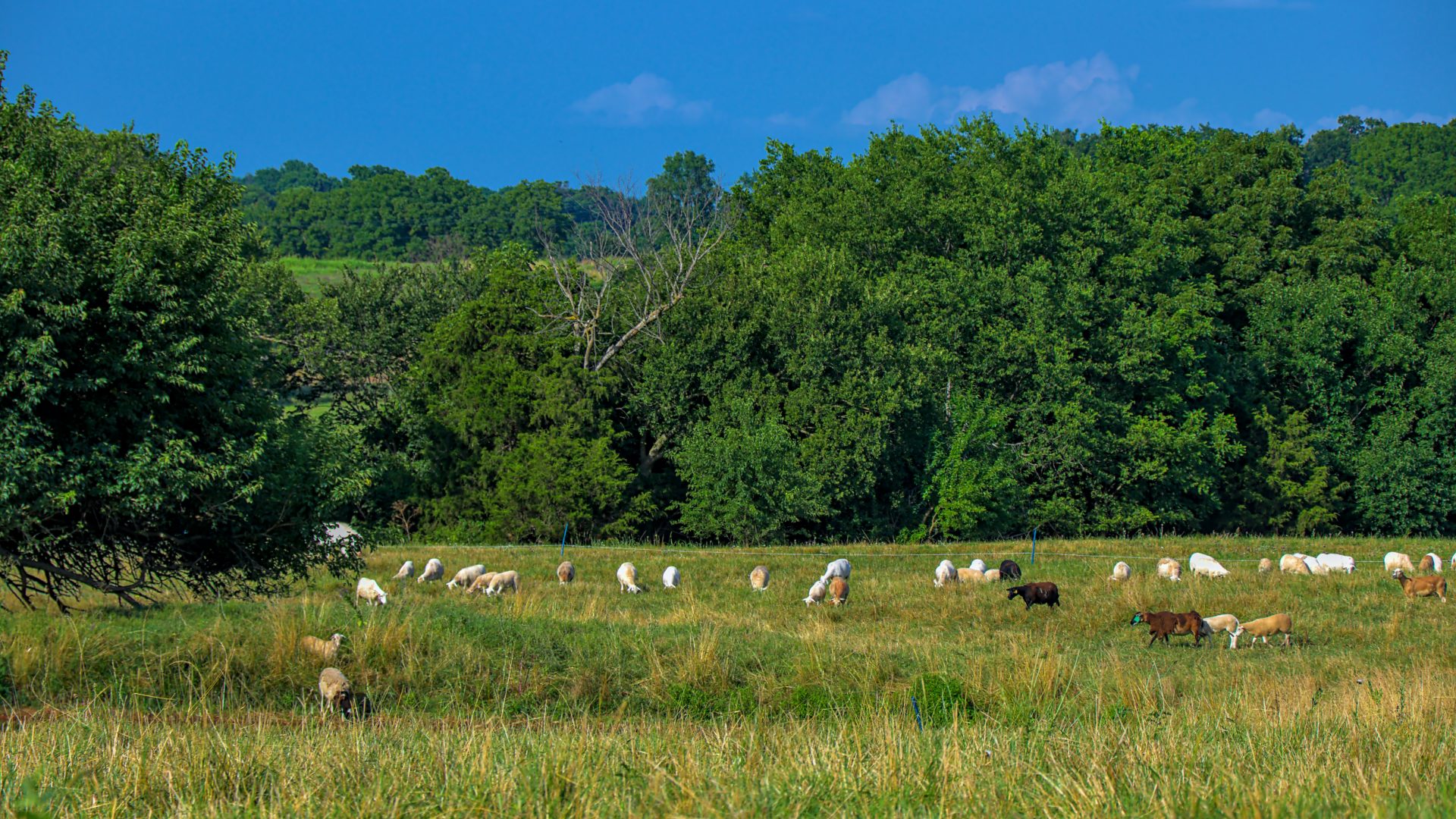
Great Ecology Welcomes Brandon, Brittany, & Liz!
November 9, 2022
Great Ecology Welcomes Geana!
November 15, 2022
Let Them Eat Weeds
Author: Liz Clift
Weed management is a challenge that faces many restoration sites—and solutions range from soil amendments that benefit native plants over invasive ones to cutting or hand-pulling weeds to application of herbicides to goats.
Yes, goats. Other herbivores can be used to, but for this post I’m focusing on goats.
Goats are browsers, which means they can eat a lot of different plants and would prefer to eat plants that are at or above eye level rather than on the ground (sheep, on the other hand, are grazers and would prefer to eat plants from the ground). They tend to defoliate plants, which makes it harder for the plants to send energy to their roots.
When goats eat a plant, their chewing and digestion also effectively destroys seeds, so the plants are not “replanted” in the manure. Goat manure is also smaller and more spread out than some other large hooved animals, which means it adds to the organic matter of soil more quickly, which can also support native plants in many parts of the US.
When goats are utilized to manage non-desirable plants, perhaps as part of something called “prescribed grazing,” they are typically corralled, provided some level of shelter and access to fresh water, and then allowed to browse freely. At some sites, additional measures may be needed to protect desired species (such as wrapping trees)—but fairly often, non-desirable plants have chocked out most or all of the desired species.
Goats can be used to help control a variety of species including:
- Himalayan blackberry (Rubus armeniacus);
- Saltcedar aka tamarisk (Tamarix spp.);
- Leafy spurge (Euphorbia esula);
- Thistles, including yellow star thistle (Centaurea solstitialis);
- Roses, including multiflora rose (Rosa multiflora);
- Buckthorn (Rhamnus cathartica);
- Garlic mustard (Alliaria petiolata);
- English ivy (Hedera helix);
- Poison ivy (Toxicodendron radicans);
- Phragmites (Phragmites australis);
- Japanese honeysuckle (Lonicera japonica); and
- Many other species.
A lot of people find goats loveable—or at least interesting—and they can act as a conversation starter for people who might not otherwise be interested in restoration at a particular site. This can lead to educational opportunities to help visitors better understand how many of our native plants depend on some level of browsing, how our altered ecosystems have made way for invasives, or how different types of weed control may all be employed on a site, depending on site conditions.
Allowing goats to browse can also help reduce wildfire risks, particularly in fire prone areas, which is good news for everyone who lives in the west—and increasingly in other areas, as more of the US experiences longer, hotter, drier summers.
Once the goats have browsed an area of unwanted plants, the cleared area can be replanted with native or naturalized species.
However, goats can also raise concerns, including concerns about overgrazing. Depending on the objectives of a site, a site might be intensively browsed, particularly when most or all of the vegetation is non-desirable, especially if it is well established. Intensive browsing may even need to happen more than once a year, or over several years to truly give native or other desirable species an opportunity to successfully establish.
Grazing may occur more “rotationally,” meaning that goats are rotated between different areas of a site, which may lessen the impacts of their browsing at any given site. This can be paired with intensive grazing practices, for “intensive rotational grazing.” Intensive rotational grazing mimics some of the natural movements of herbivores—because animals tend to be more tightly congregated and then they move on (aka have their corralled area altered to focus on another section or are led to another section).
Goats used as part of vegetation management are typically rented, and return to their home farm (or another site that needs goats) after their rotation has finished, and are typically only rented out for a portion of the year, although duration may depend on the size of the site, site objectives, and climate.
We’re excited to integrate goats into vegetation management at our Bayswater State Park project, led by Dirtworks Landscape Architecture. At Bayswater State Park, the goal of bringing in goats is primarily to help get phragmites under control, although there are other undesirable plant species on the site, which the goats may also browse. Measures will be taken to preserve native plants, including in the coastal hardwood forest.

